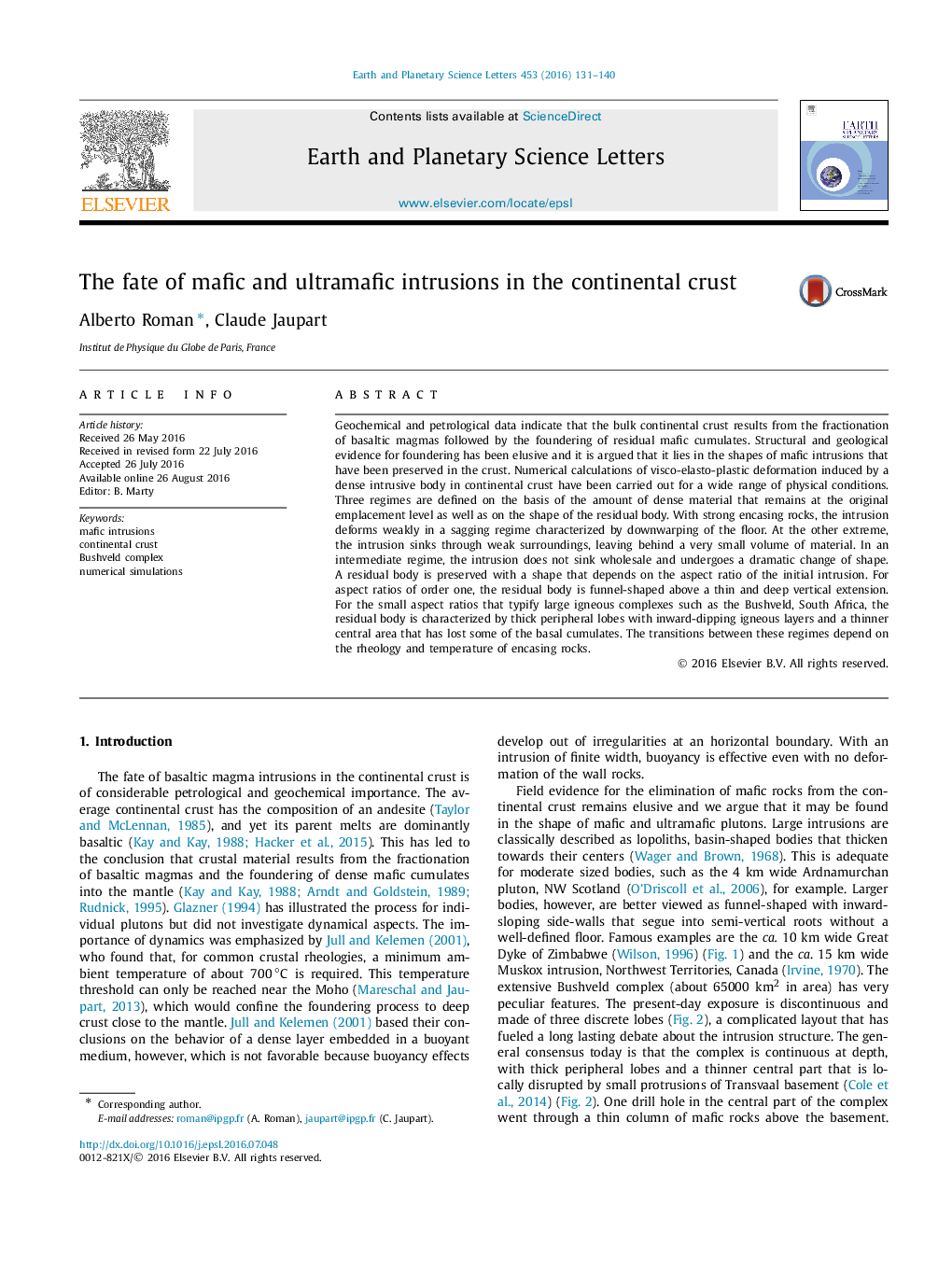| کد مقاله | کد نشریه | سال انتشار | مقاله انگلیسی | نسخه تمام متن |
|---|---|---|---|---|
| 6427151 | 1634703 | 2016 | 10 صفحه PDF | دانلود رایگان |
- Mafic intrusions experience a buoyancy reversal due to crystallization.
- The impact of the buoyancy reversal is investigated with numerical simulations.
- Many exposed mafic intrusions shapes record an incipient foundering.
- A mafic component may be removed from the crust by foundering of mafic intrusions.
Geochemical and petrological data indicate that the bulk continental crust results from the fractionation of basaltic magmas followed by the foundering of residual mafic cumulates. Structural and geological evidence for foundering has been elusive and it is argued that it lies in the shapes of mafic intrusions that have been preserved in the crust. Numerical calculations of visco-elasto-plastic deformation induced by a dense intrusive body in continental crust have been carried out for a wide range of physical conditions. Three regimes are defined on the basis of the amount of dense material that remains at the original emplacement level as well as on the shape of the residual body. With strong encasing rocks, the intrusion deforms weakly in a sagging regime characterized by downwarping of the floor. At the other extreme, the intrusion sinks through weak surroundings, leaving behind a very small volume of material. In an intermediate regime, the intrusion does not sink wholesale and undergoes a dramatic change of shape. A residual body is preserved with a shape that depends on the aspect ratio of the initial intrusion. For aspect ratios of order one, the residual body is funnel-shaped above a thin and deep vertical extension. For the small aspect ratios that typify large igneous complexes such as the Bushveld, South Africa, the residual body is characterized by thick peripheral lobes with inward-dipping igneous layers and a thinner central area that has lost some of the basal cumulates. The transitions between these regimes depend on the rheology and temperature of encasing rocks.
Journal: Earth and Planetary Science Letters - Volume 453, 1 November 2016, Pages 131-140
